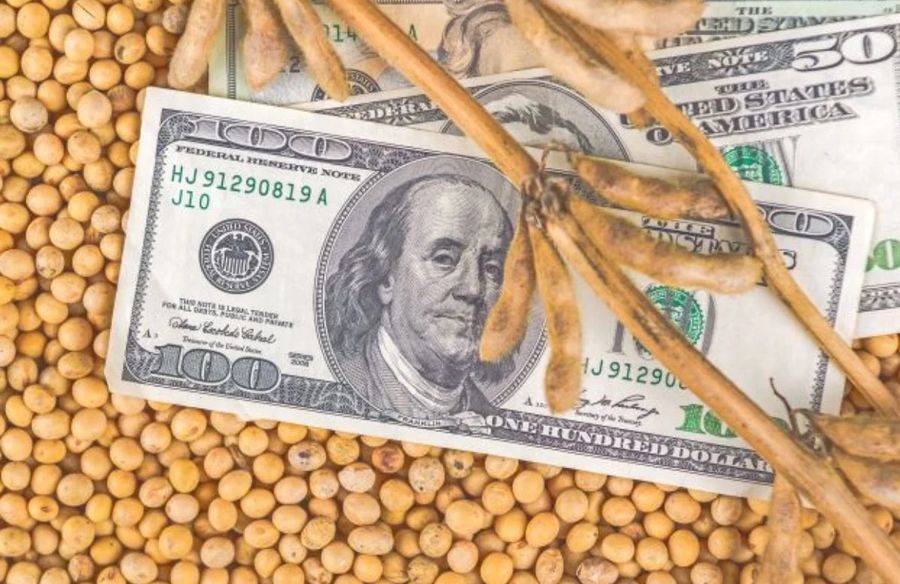Soybean prices remain under pressure from delayed plantings in Argentina and lower canola prices

Soybeans on the Chicago Stock Exchange, after falling 2.8% at the end of last week, began to rise on Monday, despite the decline in global oil prices, which pressured the quotations of soybean and palm oil and canola.
Heat of 30-35 °C in Argentina against the backdrop of a lack of rainfall delays sowing and worsens the condition of early crops, which supports prices. In Ukraine, due to new missile attacks, interruptions in energy supply continue, and the work of some processing enterprises is paralyzed. This boosted domestic demand for meal from livestock and poultry producers and supported soybean prices.
On the Chicago Mercantile Exchange, January soybean futures rose 2.4% to $541/t from Monday, and 1.9% for the month overall, despite January soybean oil futures falling from Monday by 6.6% to $1344/t, and for the week – by 18% against the background of the EPA’s permission to use Canadian rapeseed oil in the production of biodiesel in the USA.
In Argentina, the drought is significantly delaying sowing, and as of December 3, 29% of the planned area was sown with soybeans, while last year on this date 48% was sown, and on average for 5 years – 50% of the area. Next week, the weather in the country will improve – the temperature will drop to 25-30 °C, and the amount of precipitation will increase.
According to Conab, as of December 3, 91% of the planned area was planted with soybeans in Brazil (95% last year), and the weather is generally favorable for the development of crops.
In Ukraine, 3.6 million tons of soybeans were threshed from 1.5 million hectares with a yield of 2.42 tons/ha, which is 20% higher than last season. In the absence of normal exports, this could increase pressure on prices.
Last week, purchase prices for GMO soybeans rose to UAH 13,500-14,500/t, while demand prices for non-GMO soybeans remained at UAH 15,000-16,000/t with delivery to the factory. The delay by Russian inspectors in Istanbul in inspecting ships before entering the ports of Ukraine does not allow traders to resume the active purchase of soybeans in the ports, so they buy them in small batches at a price of $380-425/t with delivery to the ports of the Danube and the Black Sea.
Demand for soybeans from the EU is almost non-existent as processors have built up stocks for the next 2-3 months and local farmers have increased supply. Against the backdrop of a sharp drop in rapeseed prices from €580-620 to €530-550/t with delivery to the EU, soybean prices fell to $480/t with delivery to Poland and Hungary and $540-550/t with delivery to Italy.
The soybean market is suffering from a decline in demand from China, the world’s main oilseed importer. According to customs data, China imported 7.35 million tons of soybeans in November, which is 14% less than in November 2021. In the 11 months of 2022, soybean imports decreased by 8.1% to 80.53 million tons.
Traders will monitor the weather in South America in December. If the amount of precipitation increases, soybean prices will begin to fall again, following the decline in oil and vegetable oil prices.
Tags: Ukraine, Brazil, prices, soybean, rapeseed, USA, Argentina
Read also
Couldn’t attend BLACK SEA GRAIN.KYIV? Catch up with the insights – get the e...
Another batch of Ukrainian grain was delivered to Sudan
Grain harvest in Russia in 2024 may drop to 135-136 mln tons due to drought
The 21st International Conference BLACK SEA GRAIN.KYIV took place in Kyiv on April...
Sunflower oil production in the world is growing and “breathing down the neck” of ...
Write to us
Our manager will contact you soon











